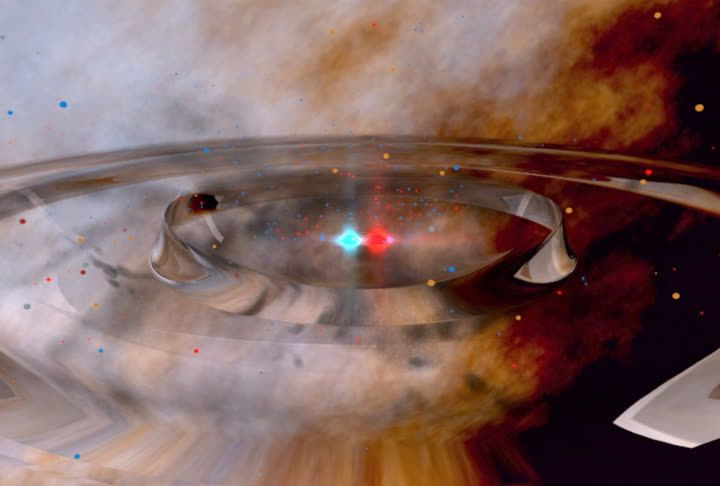Scientists Watch Black Hole Twins Collide, Gravitational Waves Ripple

Old stars that die violently can create more than one black hole as they magnificently collapse, and astrophysicists are getting a better idea of how that may happen.
A team of scientists looked into the relationship between the birth of these black holes and the gravitational waves that are rippling through outer space. Using a computer simulation, according to Kyoto University in Japan, the group got a view of a massive star collapsing into twin black holes and the waves those great voids create.
Gravitational waves are the distortions in space-time that are caused by the most powerful space events and objects. They can occur, for example, when two huge objects collide, like a neutron star and a black hole, or when two neutron stars come together and blow up in what's called a "kilonova".
Legendary physicist Albert Einstein theorized them decades ago, but they have only recently been discovered and confirmed.
“Although gravitational waves have allowed us to directly detect black holes for the first time, we still don’t know the exact origins of these particular black holes,” Kyoto University’s Joseph Fedrow said in a statement. “One idea is that these black holes formed during dynamical fragmentation of the inner core of a dying star undergoing gravitational collapse.”

As the inner core was breaking into pieces, two of those fragments could have transformed into black holes that would then be orbiting one another in a binary system, surrounded by material leftover from the dead star.
The computer simulations showed that the twin black holes would merge more quickly if they were in that sort of environment, as opposed to the emptiness of a vacuum, according to a study in the journal Physical Review Letters. Those different scenarios produce different sets of gravitational waves.
That finding tells scientists more about how binary black hole systems work.
According to Kyoto University, it also provides further evidence that the first gravitational waves detected a couple of years ago — at the Laser Interferometer Gravitational-Wave Observatory, or LIGO — came from black holes that were hanging out in a vacuum.
“In this exciting, new era of gravitational wave astronomy, we don’t know what we’ll find, or where it will lead us,” Fedrow said. “But our work here will help to illuminate untrodden paths, and shine a light upon the darkest of objects in the universe.”
© Copyright IBTimes 2025. All rights reserved.



















